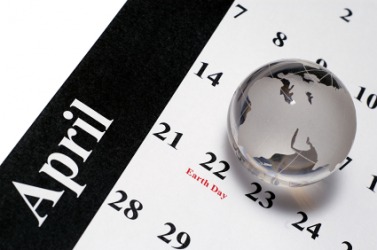
Earth Day is one of two observances, both held annually during spring in the northern hemisphere, and autumn in the southern hemisphere. These are intended to inspire awareness of and appreciation for the Earth's environment. The United Nations celebrates an Earth Day each year on the March equinox, a tradition which was founded by peace activist John McConnell in 1969. A second Earth Day, which was founded by U.S. Senator Gaylord Nelson as an environmental teach-in in 1970, is celebrated in many countries each year on April 22.

"Earth Day staff member Judy Moody works the phones on April 9, 1970, in the Washington, D.C., office for what was then called the Environmental Teach-in. With just nine staff members, the office relied heavily on volunteers and organizers in other institutions. "
Like any other holiday — much less one founded just two generations ago by hippies — Earth Day has its share of grinches, complaining about eco-sanctimony and whiningthat it hasn’t solved the world’s problems. (Isn’t Christmas terrible? All those gifts, and we still have war!) And then there’s the slightly confused hangers-on: did you know thatMajor League Baseball "has spent more than a century largely bracing against and defying Mother Nature, working alongside her in a kind of groundskeeping pact"?

" On April 22, 1970, the first Earth Day, a college student sniffs a magnolia blossom through a gas mask in New York City. "
On the 22nd of April, 1970, Earth Day marked the beginning of the modern environmental movement. Approximately 20 million Americans participated, with a goal of a healthy, sustainable environment. Denis Hayes, the national coordinator, and his youthful staff organized massive coast-to-coast rallies. Thousands of colleges and universities organized protests against the deterioration of the environment. Groups that had been fighting against oil spills, polluting factories and power plants, raw sewage, toxic dumps, pesticides, freeways, the loss of wilderness, and the extinction of wildlife suddenly realized they shared common values.
Mobilizing 200 million people in 141 countries and lifting the status of environmental issues onto the world stage. Earth Day on April 22 in 1990 gave a huge boost to recycling efforts worldwide and helped pave the way for the 1992 United Nations Earth Summit in Rio de Janeiro.

"The first Earth Day on April 22, 1970, drew crowds of thousands in cities, on campuses, and in public parks, such as this one, around the U.S"
We rarely stop to examine the effects on the environment unless we are hit by a natural disaster. The growth in population, deforestation and pollution is causing serious harm to our environment. It is about time that everyone should sit up and take notice. The natural balance of the world is shifting dangerously away from us and we should take care of our environment before it is too late.

"Approximately 7,000 people gather on Independence Mall in Philadelphia on the first Earth Day--April 22, 1970."
Earth Day provides us with a perfect opportunity to raise awareness and to change our lifestyle so that we can live in harmony with nature. The younger generations should be made aware of the wonderful elements of nature, while alerting them to the problems faced by our environment at the same time.

" Students from the Convent of the Sacred Heart School in New York City sweep up the city's Union Square as part of the first Earth Day on April 22, 1970."



